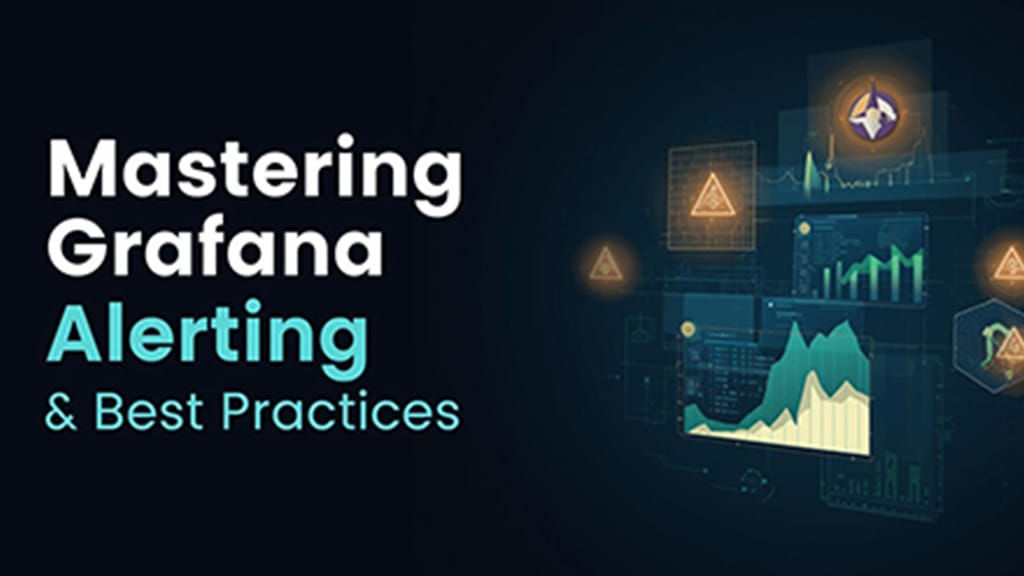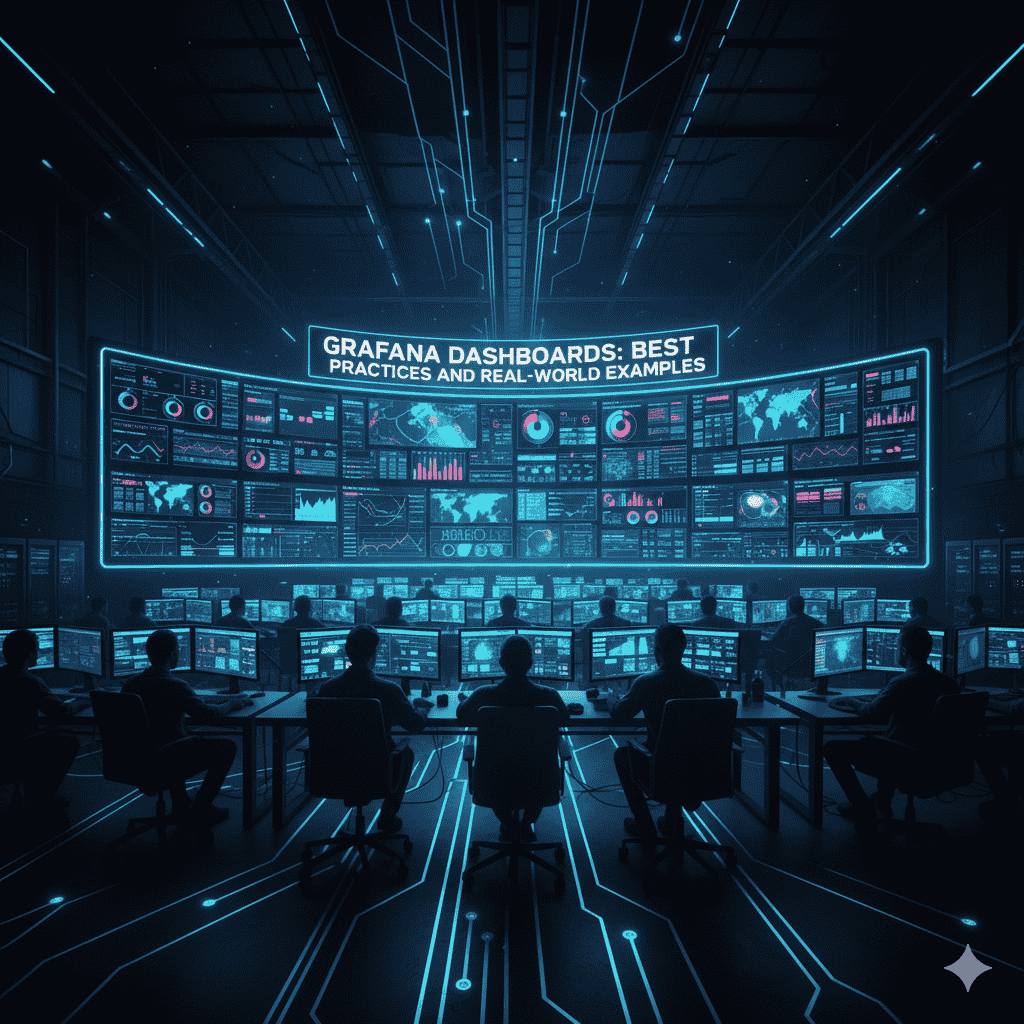Mastering Grafana Alerting: Strategies, Examples & Best Practices
Learn how to leverage Grafana Alerting for scalable, actionable monitoring. Discover practical examples, best practices, and code snippets for building effective alerts in modern observability stacks.

Introduction
Grafana Alerting empowers DevOps engineers and SREs to unify monitoring and alerting across diverse data sources, providing a crucial layer for observability-driven operations. In today's complex, distributed systems, effective alerting reduces Mean Time to Resolution (MTTR) and prevents costly outages by surfacing actionable signals, not noise.
What is Grafana Alerting?
Grafana Alerting is a flexible, scalable system built on the Prometheus alerting model. It enables you to define, manage, and route alerts for metrics, logs, and events, regardless of where your data resides. Alerts can be created from any Grafana-supported data source, ensuring comprehensive coverage for your infrastructure and applications.
Key features:
- Multi-source alerting: Define rules on metrics, logs, traces, and more.
- Unified alert management: Manage all alerts and notifications in a single view.
- Flexible routing: Use notification policies and contact points for targeted delivery.
- Alert grouping and silencing: Reduce noise and prevent alert fatigue.
- Integrated with incident response: Streamline triage and resolution workflows.
Core Concepts of Grafana Alerting
Alert Rules
An alert rule defines the conditions under which an alert should fire. Each rule consists of one or more queries (such as PromQL, SQL, or logs), an evaluation condition, and notification settings.
Example: Monitor high CPU usage across nodes.
sum(rate(node_cpu_seconds_total{mode!="idle"}[1m])) by (instance) > 0.9This rule triggers an alert if the average CPU usage exceeds 90% for any instance.
Alert rules can be multi-dimensional, producing separate alert instances for each series or label (e.g., by instance or service).
Alert Instances
Each rule evaluation can produce multiple alert instances—one per dimension. For example, a rule monitoring by instance will create a separate alert for each server.
Organizing alerts by dimension improves visibility and enables targeted responses.
Contact Points
Contact points specify where notifications should be sent—Slack, email, PagerDuty, webhook, or custom IRM systems. Grafana supports integrating with major ChatOps and incident management platforms, ensuring alerts reach the right teams.
Notification Policies
Notification policies allow for advanced routing and grouping of alerts. Policies match alert labels (such as severity or team) to control delivery, escalation, and timing.
Policies are organized in a tree structure, with the root policy as the fallback. This enables granular control for large organizations and complex environments.
Grouping and Silencing
To prevent alert fatigue, Grafana groups related alerts and supports silences and mute timings. Silences pause notifications temporarily (e.g., during maintenance), while mute timings automate quiet periods (e.g., weekends, nights).
Practical Example: Building an Alert Rule
- Select a Data Source
Choose your metric provider, such as Prometheus, Loki, or a SQL database. - Set the Condition
Configure the threshold: "If error rate > 5/min for any service, fire an alert." - Configure Notifications
Select a contact point (e.g., Slack channel#oncall). - Apply Notification Policy
Route alerts labeledseverity="critical"to incident management, others to email.
Define the Query
sum(rate(http_requests_total{status="500"}[5m])) by (service)This tracks error rates by service.
Sample Alert Rule (Grafana UI YAML)
apiVersion: 1
groups:
- name: example
rules:
- alert: HighErrorRate
expr: sum(rate(http_requests_total{status="500"}[5m])) by (service) > 5
for: 2m
labels:
severity: critical
annotations:
summary: "High error rate detected in {{ $labels.service }}"
Best Practices for Grafana Alerting
- Quality over quantity: Only alert on actionable, high-impact events to avoid noise.
- Label alerts: Use labels for severity, team, and resource to enable smart routing and filtering.
- Automate provisioning: Use APIs or Terraform for alert rule management, especially at scale.
- Include context: Link alerts to dashboards, include diagnostic annotations, and provide guidance for responders.
- Review regularly: Tune thresholds, silence unnecessary alerts, and audit notification policies to adapt as your system evolves.
Advanced Techniques: Multi-Dimensional and Dynamic Alerting
Grafana supports high-cardinality alerting and dynamic thresholds. For example, you can create alert rules that adapt based on historical baselines or trigger on outliers—ideal for SLOs and anomaly detection.
avg_over_time(cpu_usage{instance="$instance"}[1h])This enables dynamic comparisons and reduces false positives in volatile environments.
Integrating Grafana Alerting with Incident Response
Grafana Alerting integrates natively with incident response tools such as PagerDuty, Opsgenie, and Grafana IRM, streamlining on-call management and escalation workflows. Well-designed alerts reduce context switching and enable faster triage from notification to resolution.
Conclusion
Grafana Alerting is a powerful, flexible solution for modern observability. By combining multi-source monitoring, advanced routing, and best practices, teams can minimize downtime, reduce alert fatigue, and drive efficient incident response. Regularly review and refine your alerting strategies to keep pace with evolving infrastructure and business needs.




